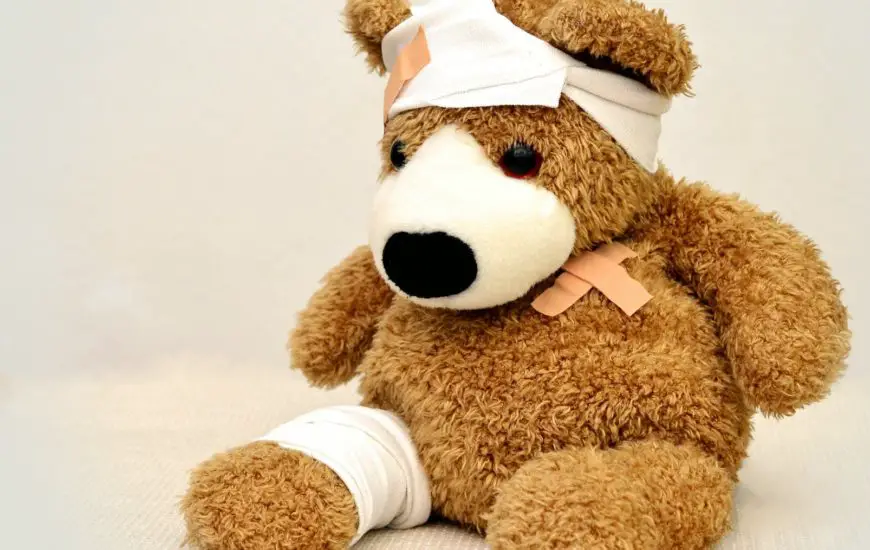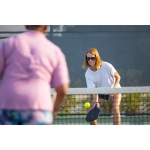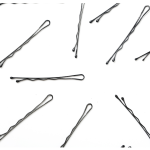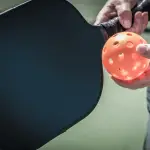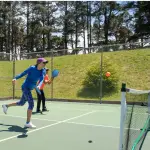This is a post about Pickleball injures but first I want to give you some background on my experience with injuries. Click here to skip the personal part and get to the meat of the article.
Let’s face it, one of the reasons I took up Pickleball is because I couldn’t move around on the racquetball court or soccer fields like I did when I was young. And really, I didn’t have much choice as five years ago I tore my left anterior cruciate ligament (ACL) while playing basketball on a trip to Mexico.
The bad thing about an ACL tear is if you have surgery, it’s a year-long recovery and it’s very painful. Ugh. So, I opted not to have surgery and went through a few months of physical therapy. Shortly thereafter, I went back to my orthopedic doctor for one more checkup. He said the therapy did its job but I literally have no ACL as it was completely torn. What this means in practice is you can dislocate your knee because there is no anterior ligament.
So, I can walk and run and do activities which don’t require side-to-side motion or pivoting like in most court sports. With that being said, I asked my doctor whether I could play court sports. He said it depends on how strong the muscles are around the knee. In fact, he said he played indoor soccer with someone who also had completely torn his ACL.
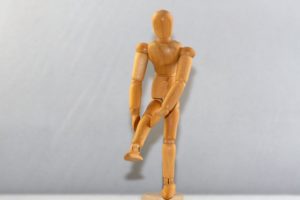
I realized for me playing soccer was way too risky. In the very first game I ever played, I twisted my ankle, tearing all of the ligaments and couldn’t do anything for months! That was hard since at the time I was teaching college courses in racquetball.
Pickleball to the Rescue
Honestly, I didn’t play any competitive sports for about four years after my ACL tear. That was until I learned about Pickleball. My thought was I can play Pickleball because I won’t have to move around that much. Well, that’s what I figured when I started playing. In actuality, I move around just as much as if playing any other court sport. I need to move to the net and run to the back of the court to cover lobs. It’s just in my nature to be competitive.
So, I was playing last Saturday night against some good competition. I finished a game and went upstairs for some water. As I walked up the stairs I thought oh my knee is kind of bothering me. And darn if it wasn’t my left knee with no ACL. Instead it was my right knee! Ugh. So, I’m out for a bit not wanting to completely tear my right ACL. This is giving me some time to do some writing so here’s some information on Pickleball injuries.
Type of Pickleball Injuries
Injuries can be categorized as either acute or chronic. An example of an acute injury is when I tore my ACL. In other words, there was a direct connection between grabbing a rebound and my knee giving out because I tore a ligament.
Chronic injuries are recurring issues. For example, I have had a sore elbow ever since I moved last year. This was before I started playing Pickleball so it was not the cause. I think it doesn’t heal because I likely have an underlying issue like arthritis.
Common Pickleball Injuries
Tennis Elbow

I mentioned having a sore elbow above and it’s likely tennis elbow although I didn’t hurt it playing tennis or Pickleball. However, tennis elbow is one of the most common injuries to occur in Pickleball. Tennis elbow occurs when you have pain in the tendon which attaches to the bony bump on your elbow. You know you have tennis elbow when it it is painful to hold a cup, turn a door know or shake someone’s hand. The best medicine for tennis elbow is to rest but that can be hard to do when you want to play Pickleball!
Why does tennis elbow occur? It’s usually because of poor stroke mechanics or your paddle is too light. In the first case, you may want to get some instruction from a Pickleball pro. In the second case a heavier paddlle will help as it will do more of the work rather than your arm.
I actually expect to see more tennis elbow in Pickleball players because the paddle preferred by most recreational players is lighter than what was used a few years ago. I had the opportunity to import some heavier paddles from China and most of the beginning players said they were too heavy. A couple of my friends who are more advanced, however, loved these paddles because they realized they generated more power from the paddle compared to trying to swing really hard with their arm.
Achilles Tendon
A number of scientific studies indicate tennis players suffer a lot of achilles tendon injuries. The same is likely true for Pickleball players. I heard Mark Anders, the Pickleball Pro at Palmetto Dunes in Hilton Head, say that he sees many achilles tendon injuries. Mark teaches and organizes Pickleball Play on Palmetto Dunes 16 dedicated courts so he sees a lot of players so I can certainly believe it.
Achilles tendon injuries may or may not require surgery. I had a friend rupture his achilles tendon while we were playing in a racquetball exhibition match many years ago. At that time surgery was recommended to it took him about six months to get back on the court.
Sprains/Strains
Sprains and strains are common in every sport. My friend Paul, just the other day, had back spasms from Pickleball. He took off a few days and his strained back felt better. Besides back strain, ankle sprains are also common in Pickleball. Ice and rest are the best medicine for these issues.
Why Injuries occur
I should have probably covered this up front, but the two most common reasons we get injured is because we do not warm up properly or because of overuse. How often do you see someone stretching before playing Pickleball? Not very often! I remember the first thing I did in high school and college sports was to stretch before playing. Now, I never even think of it.
The other most common reason is due to overuse. I know a player who plays everyday, which isn’t than unusual when you are retired. But he plays, everyday at multiple facilities so he must be playing a good 6 hours each day. I think if you are of retirement age, that might be a bit too much. So, an overuse injury is more likely to occur.
Another factor in Pickleball injuries can be the environment, meaning we can step on a ball that rolled over from another court and sprain an ankle. Or we can slip on some water because the courts had slick spots from rain. Sometimes injuries happen like this just because we are unlucky.
What to Do After an Injury

In the case of acute Pickleball injuries, you may need to see a doctor and/or physical therapist. I saw a doctor when I completely tore my left ACL. My right ACL is sore but I don’t think torn, likely just strained. So, I’ll either go the the physical therapist or just rehabilitate on my own since I remember the exercises my physical therapist had me do previously. The key for me will be to rest from Pickleball so I don’t make the injury worse.
In the case of sprains, strains, and chronic injuries rest and ice help a great deal. I also use a physical therapy device called a tens unit which has muscle stimulation. I usually put it on my lower back for about 30 minutes after playing Pickleball and I wake up the next day without any stiffness. It’s a real miracle worker! Here’s a link to a review of these machines as I recommend them highly.
If you have ankle or knee strains or sprains, make sure you are wearing the proper shoes. Jogging shoes are not advised for playing Pickleball. If you are playing outdoors, a tennis shoe is recommended. If you are playing indoor, a volleyball shoe is also good. In either case, tennis and volleyball shoes will provide the support necessary to for lateral or side-to-side motion. Check out my review of the best Pickleball shoes for top rated options.
So, as I wrote this yesterday I though my knee was getting better and I would be back to Pickleball soon. However, I just got up from my chair and my knee almost gave out. I guess it will be awhile before I’m back to the courts.

